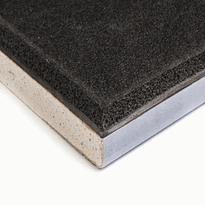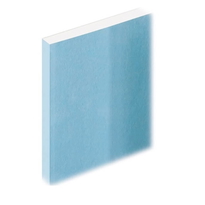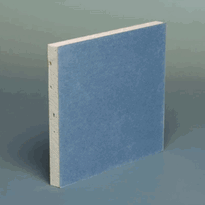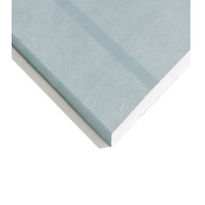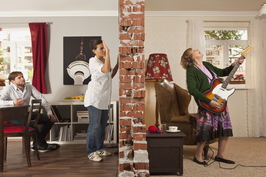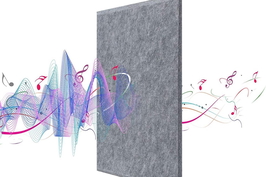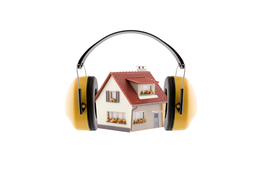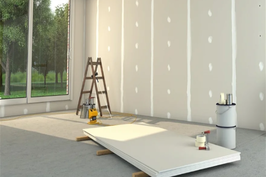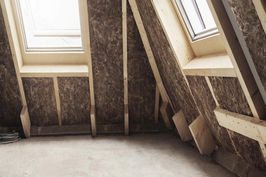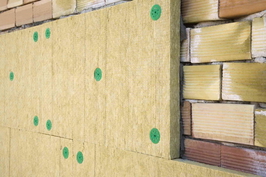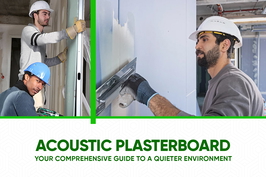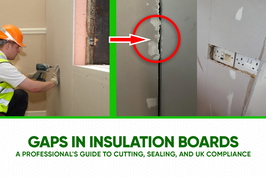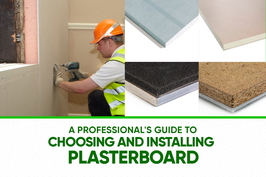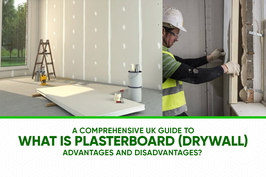Sound Proof Plasterboard
Soundproof plasterboard is specifically engineered to minimize airborne and impact noise transmission, making it an excellent choice for improving acoustic privacy in both residential and commercial environments. It features dense cores and is available in standard thicknesses such as 12.5mm or 15mm, ensuring optimal soundproofing performance. All products are tested in accordance with industry standards like EN 520 to guarantee consistent and reliable results.
Proper installation is crucial to maximize the effectiveness of soundproof plasterboard. This involves securing the boards with fixed joints, filling gaps with dedicated acoustic insulation materials, and sealing edges thoroughly to prevent sound leaks. When correctly installed, soundproof plasterboard can significantly enhance the acoustic comfort of any space.
Continued exploration and guidance are available to assist in selecting suitable plasterboard, planning effective installation, and optimizing soundproofing performance for various applications across the UK.
Key Benefits of Soundproof Plasterboard
Soundproof plasterboard offers several practical benefits that make it a valuable building material for controlling noise. Its primary advantage is its ability to significantly reduce airborne and impact noise, which is essential for creating comfortable living and working environments. By minimizing sound leakage between rooms, it enhances privacy and overall comfort, making spaces feel more secure and private.
Additionally, it's a cost-effective solution, as installing soundproof plasterboard typically requires minimal renovation work and can be completed with common tools. Its dense core improves sound-dampening performance, especially when layered or combined with other materials like mass-loaded vinyl. Furthermore, it provides a degree of thermal insulation and is resistant to moisture and mold, ensuring durability and contributing to a healthier indoor environment. Gypsum core's sound-absorbing qualities also help to further enhance noise reduction effectiveness.
Types and Specifications for Effective Noise Reduction
Different types of soundproof plasterboards are designed to meet specific noise reduction requirements and installation conditions, offering a range of features that influence their effectiveness.
For instance, Gyproc SoundBloc features a high-density core, providing both superior noise insulation and fire resistance, making it suitable for critical applications where effective soundproofing is essential. GTEC dB Board, recognized by its distinctive blue colour, is denser and harder than standard plasterboards, with a 30% higher weight, to enhance soundproofing capabilities.
Knauf Soundshield Plus offers versatility with thickness options of 12.5mm and 15mm, and it features tapered edges for easier installation.
Specifications such as thickness, density, and size—commonly 12.5mm or 15mm, in dimensions of 2400mm by 1200mm—are selected based on the desired sound insulation performance.
These boards are often manufactured to meet standards such as EN 520:2004+A1:2009, ensuring consistent quality and performance.
The selection of suitable plasterboard types and their tailored specifications serve to optimize noise reduction in various building environments across the UK, contributing to healthier, more comfortable living and working spaces.
Installation Techniques for Optimal Performance
Proper installation of soundproof plasterboard demands careful attention to framework, insulation, and sealing methods to ensure superior acoustic results. Using appropriate spacings for the studs—no more than 600mm centers for a single layer and 400mm for multiple layers—provides stability and enhances sound insulation. Metal studs should be at least 70mm deep to optimize acoustic properties, while timber studs must meet minimum size requirements to securely support the plasterboard.
Filling the cavities entirely with insulation, such as semi-rigid mineral wool, is essential. This prevents gaps that can compromise soundproofing performance and ensures energy efficiency.
During installation, maintain a gap of 3-5mm at junctions and fix boards vertically to reduce the number of joints. Staggering the seams between layers helps eliminate weak points that could allow sound transmission.
Sealing all penetrations and junctions with acoustic sealant is vital to prevent sound leaks. Applying Green Glue or similar damping compounds between layers can further enhance sound attenuation.
Adhering to these best practices will significantly improve the soundproofing effectiveness of plasterboard installations, creating a quieter and more comfortable environment.
Compliance and Testing Standards in Acoustic Materials
The compliance and testing standards applicable to acoustic materials, such as soundproof plasterboard, ensure these products meet specific performance criteria established by authoritative organizations. These standards guarantee that acoustic products deliver consistent sound insulation, facilitating their reliable use in UK building construction. Testing typically involves mounting drywall systems in controlled laboratory conditions that replicate real-world applications, with partitions properly sealed to prevent sound leakage. specifies procedures for measuring the sound reduction index (R), which is critical for assessing acoustic performance. Standards such as BS EN 16703:2015 and BS EN 520:2004+A1:2009 specify test methods for airborne sound insulation, often involving measurements of the Sound Reduction Index (R or Rw) and Sound Transmission Class (STC). These metrics enable objective performance comparisons. Certification to these standards confirms compliance with UK Building Regulations, such as Document E, ensuring effective soundproofing and ongoing building safety. Adherence to these rigorous testing protocols provides architects, contractors, and clients confidence that acoustic materials will perform as expected in real-world environments.
Practical Applications and Cost Considerations
Soundproof plasterboard is widely used across a variety of settings where reducing noise transmission is essential for occupant comfort and compliance with regulations. It's commonly installed in residential properties such as homes and flats, particularly in bedrooms, home cinemas, and recording studios, to minimize sound leakage.
In commercial environments such as hotels, schools, and healthcare facilities, it effectively blocks airborne noise, supporting a controlled environment and safeguarding privacy. When incorporated into comprehensive soundproofing systems with acoustic insulation and appropriate layering, its performance can be significantly enhanced.
In terms of cost, soundproof plasterboard tends to be more expensive than standard plasterboard due to specialized materials and manufacturing processes. However, its straightforward installation process can help reduce labor costs, making it economically feasible.
Its moisture-resistant properties also make it suitable for use in damp areas such as bathrooms and kitchens, where moisture management is critical.
While highly effective against airborne noise, additional treatments are often necessary to address impact noise, which can influence overall system costs and design choices. Combining soundproof plasterboard with other acoustic elements ensures optimum soundproofing performance tailored to specific needs.
Conclusion
Soundproof plasterboard provides an effective solution for reducing noise transmission in a variety of settings. Its performance largely depends on selecting the appropriate types, correctly following installation techniques, and ensuring compliance with relevant standards. The choice of plasterboard should be guided by specific acoustic requirements and budget considerations. Proper installation demands careful attention to detail to optimise soundproofing effectiveness. By understanding these factors, users can achieve superior sound insulation results, making soundproof plasterboard a reliable material for creating controlled acoustic environments across the UK.
